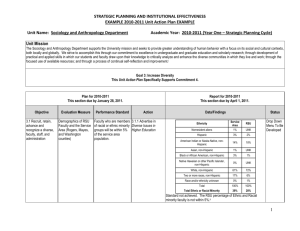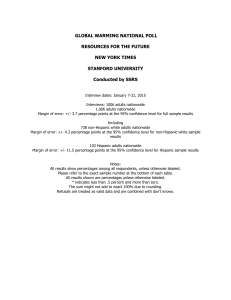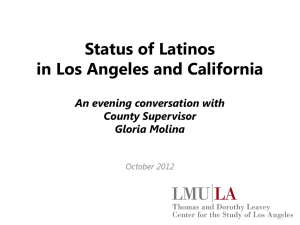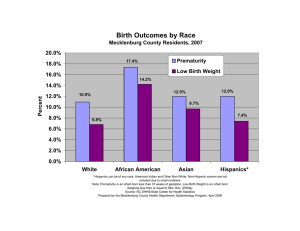Physical Activity in Minority Populations: Overcoming a Public
advertisement
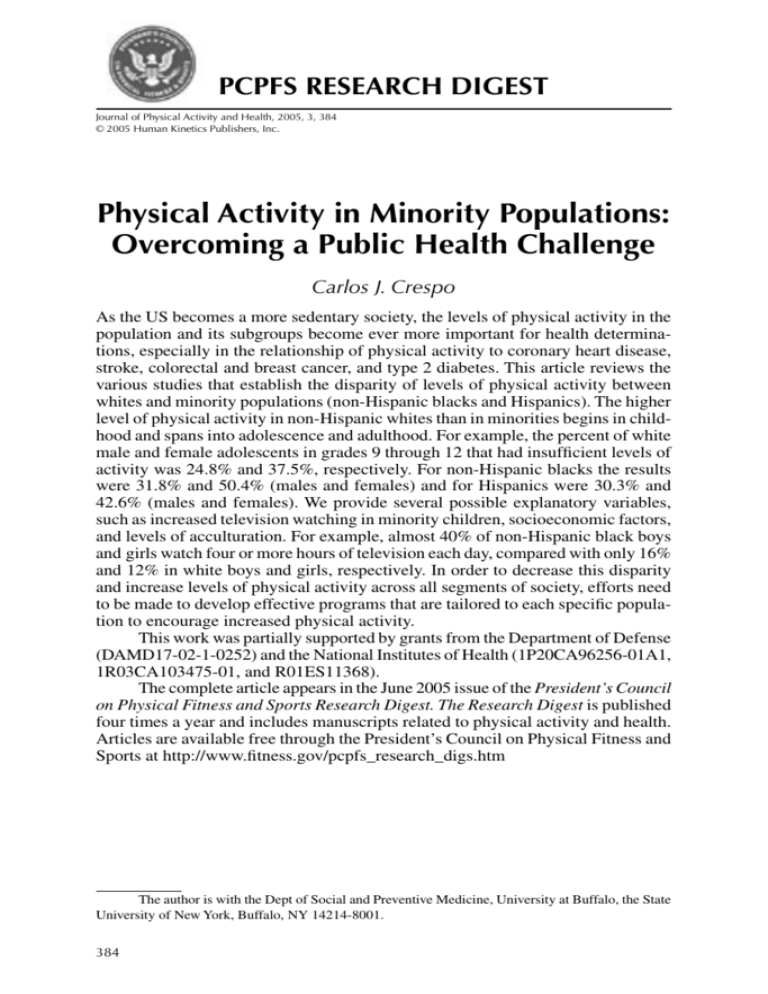
PCPFS RESEARCH DIGEST Journal of Physical Activity and Health, 2005, 3, 384 © 2005 Human Kinetics Publishers, Inc. Physical Activity in Minority Populations: Overcoming a Public Health Challenge Carlos J. Crespo As the US becomes a more sedentary society, the levels of physical activity in the population and its subgroups become ever more important for health determinations, especially in the relationship of physical activity to coronary heart disease, stroke, colorectal and breast cancer, and type 2 diabetes. This article reviews the various studies that establish the disparity of levels of physical activity between whites and minority populations (non-Hispanic blacks and Hispanics). The higher level of physical activity in non-Hispanic whites than in minorities begins in childhood and spans into adolescence and adulthood. For example, the percent of white male and female adolescents in grades 9 through 12 that had insufficient levels of activity was 24.8% and 37.5%, respectively. For non-Hispanic blacks the results were 31.8% and 50.4% (males and females) and for Hispanics were 30.3% and 42.6% (males and females). We provide several possible explanatory variables, such as increased television watching in minority children, socioeconomic factors, and levels of acculturation. For example, almost 40% of non-Hispanic black boys and girls watch four or more hours of television each day, compared with only 16% and 12% in white boys and girls, respectively. In order to decrease this disparity and increase levels of physical activity across all segments of society, efforts need to be made to develop effective programs that are tailored to each specific population to encourage increased physical activity. This work was partially supported by grants from the Department of Defense (DAMD17-02-1-0252) and the National Institutes of Health (1P20CA96256-01A1, 1R03CA103475-01, and R01ES11368). The complete article appears in the June 2005 issue of the President’s Council on Physical Fitness and Sports Research Digest. The Research Digest is published four times a year and includes manuscripts related to physical activity and health. Articles are available free through the President’s Council on Physical Fitness and Sports at http://www.fitness.gov/pcpfs_research_digs.htm The author is with the Dept of Social and Preventive Medicine, University at Buffalo, the State University of New York, Buffalo, NY 14214-8001. 384

